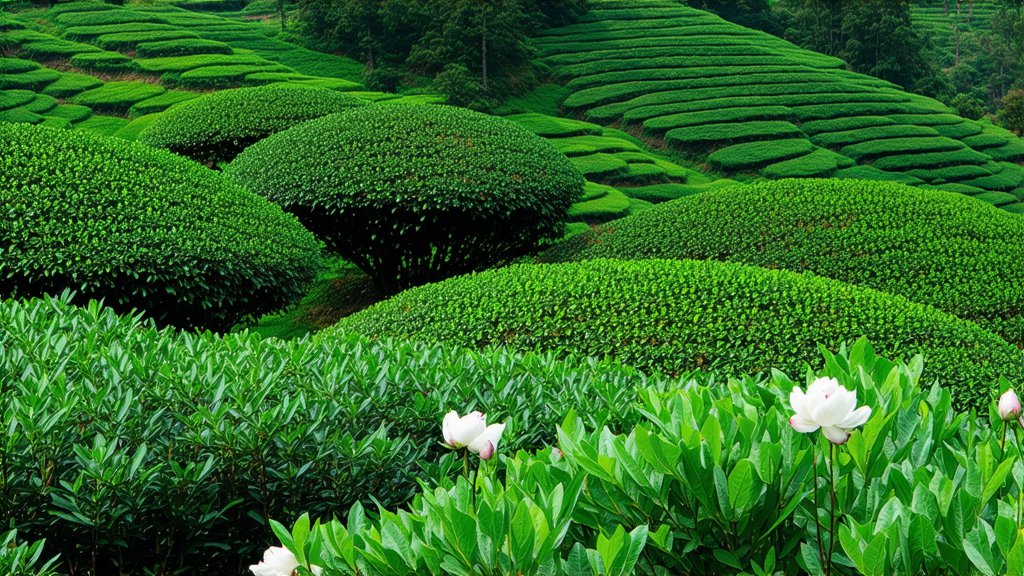
In the heart of China's Fujian province lies a treasure trove of tea culture that has captivated enthusiasts for centuries. Among the myriad varieties of Chinese tea, one stands out for its elegance and subtlety – the White Peony Tea (Bai Mudan). This exquisite tea, often hailed as a symbol of purity and refinement, offers a glimpse into the rich tapestry of Chinese tea heritage. Join us on a journey through the history, varieties, meticulous craftsmanship, and the art of tasting this enchanting beverage.
A Glimpse into History
The origins of White Peony Tea can be traced back to the Tang Dynasty (618-907 AD), a period renowned for its cultural flourishing and advancements in agriculture. Legend has it that the tea was discovered by a humble tea farmer who stumbled upon a unique varietal of tea bush. Intrigued by its distinct characteristics, he cultivated and processed the leaves, creating what would later become known as Bai Mudan. Over time, this tea gained popularity among the imperial court and the literati, becoming a symbol of sophistication and taste.
Varieties and Characteristics
White Peony Tea falls under the category of白茶 (Bai Cha), or white tea, which is minimally processed to retain its natural flavors and properties. Unlike green or black tea, white tea undergoes no rolling or oxidation, preserving its delicate structure and light color. Within the realm of white teas, Bai Mudan is particularly prized for its balanced flavor profile and aromatic complexity.
There are two main types of Bai Mudan: traditional and modern. The traditional version features whole leaves and buds, resembling the shape of a peony flower, hence the name "White Peony." It consists of one bud surrounded by two young leaves. The modern variant, however, often includes more mature leaves, resulting in a slightly different flavor and appearance. Both types share a common characteristic: a pale yellow liquor that exudes a sweet, floral fragrance with hints of fruitiness.
The Art of Craftsmanship
The production of Bai Mudan is an art form in itself, demanding precision and care at every step. Harvesting typically occurs in early spring when the tenderest buds and leaves are plucked by skilled hands. These are then carefully laid out to wither under the sun, a process that can take several hours to days depending on weather conditions. Withering is crucial as it removes moisture from the leaves while allowing enzymes to break down complex molecules, enhancing the tea's natural sweetness and aroma.
After withering, the leaves undergo a gentle drying process, either through sun exposure or low-temperature ovens. This step further reduces moisture content without damaging the delicate structures within the leaf. Finally, the dried leaves are sorted and graded based on size and quality before being packaged for distribution. Each batch of Bai Mudan is a testament to the tea master's expertise and dedication to preserving the essence of nature.
Tasting the Essence
To truly appreciate Bai Mudan, one must engage in the ritual of tea tasting, known as "pincha" in Chinese. Begin by selecting a high-quality Bai Mudan, preferably sourced directly from Fujian province. Use freshly drawn, filtered water heated to approximately 80-85°C (176-185°F) to avoid scalding the delicate leaves. Place about 3-5 grams of loose leaf tea into a Gaiwan or Yixing teapot, allowing room for expansion.
Pour hot water over the leaves, covering them completely, and let steep for 1-2 minutes. As you lift the lid, inhale deeply to capture the tea's inviting aroma. Pour the first infusion into a fair cup, then into individual tasting cups. Observe the tea's color – a pale yellow hue indicative of its purity and freshness. Sip slowly, allowing the liquid to coat your palate, noting the initial sweetness followed by a subtle vegetal note and a clean finish.
Repeat the infusion process multiple times, each brew revealing new dimensions of flavor. Bai Mudan is known for its longevity, capable of producing up to seven infusions without losing its character. With each subsequent brew, you'll discover nuances that reflect the terroir, climate, and craftsmanship behind this extraordinary tea.
Conclusion
Fujian White Peony Tea represents more than just a beverage; it embodies centuries of tradition, artistry, and a deep connection to nature. From its storied past to its intricate production methods, Bai Mudan invites us to slow down and savor life's simple pleasures. Whether you're a seasoned tea connoisseur or a curious newcomer, exploring the world of Bai Mudan is sure to enrich your understanding and appreciation of Chinese tea culture. So next time you raise a cup, remember the journey it took to bring this delicate elixir to your hands – a journey steeped in history, passion, and the enduring legacy of Fujian's tea artisans.